Where do all the siblings go? One of my earliest book memories was of Ida in Maurice Sendak’s Outside Over There taking matters into her own hands to rescue her baby sister, who has been replaced with a changeling (and, in the movies, the well-named Sarah similarly setting off to save her little brother from the clutches of the Goblin King). The Pevensies ruled Narnia together. Meg Murry and her brother Charles Wallace traveled the universe to get their father back in A Wrinkle in Time, their brothers Sandy and Dennys traveled back to biblical times, and all sorts of other adventures befell their family, as well as the other assorted O’Keefes and Austins and their acquaintances. And I adored William Sleator’s Singularity, in which teenage Harry figured out a way to get out from under the shadow of his twin.
All of that drove home what I knew from my own experience: siblings could be maddening, but they were important.
I’ve always been drawn to stories that center family dynamics, and particularly sibling dynamics, whether supportive or just complicated. They’re harder to find in adult fiction (I’m pretending not to see you over there, Lannisters), but often even richer for the nuances that enter the picture. In We Are Satellites I set out to depict siblings who were continually rewriting the relationship between each other, as events external and internal to the family wedged between them. I wanted it all to show over the years: the protectiveness, the frustration, the solidarity shared by the only people who know what it’s like to grow up in a particular household, the perception of fairness and justice through a familial lens. A sibling relationship seemed like the perfect way to show the divisions created by my imagined Pilot technology. I couldn’t have done that without great examples like these books.
Here are five more adult SFF books built around a rich, gooey, sibling core.
The Once and Future Witches by Alix E. Harrow
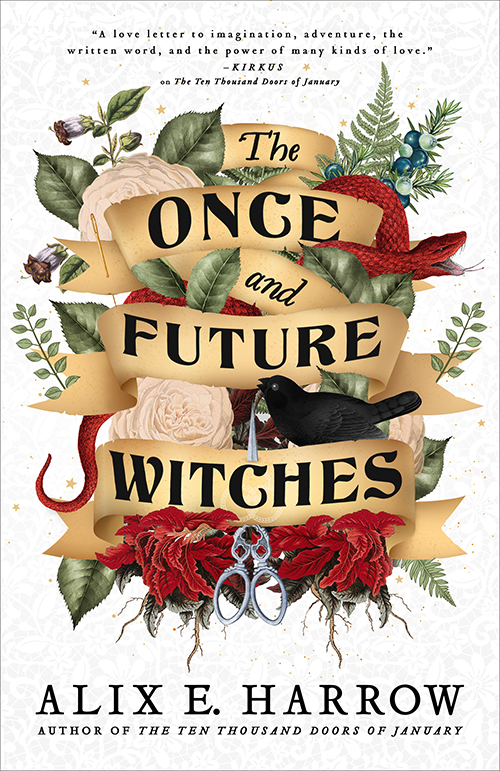
Three estranged sisters in a historical alternate United States find themselves in the city of New Salem after years apart, drawn together reluctantly by the magical threads that still bind them. They have longstanding and well-founded issues with each other, which have only festered and grown over their years apart. In order to work together, they have to learn to communicate, to understand, to forgive, and to recognize each others’ differences and strengths. These are real sibling relationships, fraught, lived in, drenched in personal history. As one of three sisters (and the daughter of one of three sisters) I finished this book and immediately bought it for my sisters and my mother.
The Black Tides of Heaven by Neon Yang
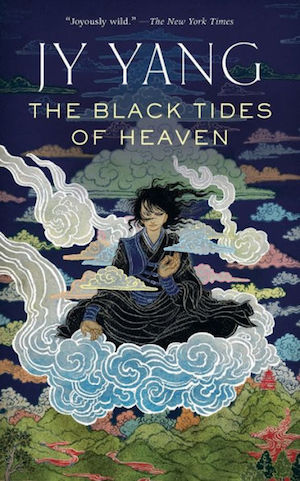
This is one of a pair of twin novellas about the twin progeny of the Protector. Mokoya and Akeha are sent by their autocratic mother to be raised in a monastery, and as they grow into adulthood, they find themselves on opposite sides of a rebellion. Mokoya stays, her power useful in supporting her mother’s Protectorate, while Akeha flees and takes up with the Machinists’ cause. The twins’ relationship, their different powers, their confusion as they watch each other make choices that they don’t themselves understand, are all at the emotional core of this powerful novella.
Beggars in Spain by Nancy Kress
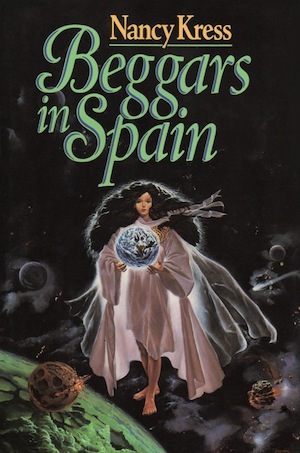
Alice and Leisha are fraternal twins with one huge difference: Leisha has been genetically modified to be one of a growing number of Sleepless children, and her sister has not. Leisha has all that the Sleepless modification confers, including longevity, productivity, intelligence, and good health, and is doted on by their father as the child he designed, while Alice is in every way the ordinary daughter their mother had hoped to have. From the start, they are each other’s playmates, but they know the differences: Alice gets cranky and has to go to bed, and that’s when Leisha’s tutors come in for the night. As they get older, their relationship gets complicated. Leisha craves connection with her sister, but Alice just wants to be normal, and is embarrassed by the attention Leisha gets. Leisha even saying the word “twin” to describe them upsets Alice. Leisha seeks out her Sleepless peers, while Alice deliberately gets pregnant, rejects their longstanding plans, and leaves to make her own way in life. The book takes place over most of a century and moves on to other protagonists and the larger societal repercussions of the Sleeper/Sleepless divide, but it’s the fierce, contentious sibling relationship that has stayed with me in the years since I read the book.
Brothers in Arms by Lois McMaster Bujold
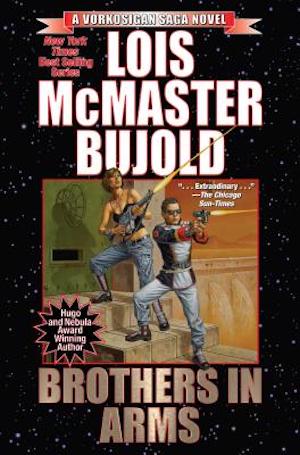
Miles Vorkosigan was raised as an only child. It wasn’t until he was well into adulthood that he met his brother Mark. Mark was in fact Miles’ clone, created by a terrorist as part of a long-game plot to replace Miles, assassinate his father and the Emperor, and ascend the imperial throne. Starting in Brothers in Arms, and continuing through a half-dozen other books in the Vorkosigan saga, Miles and Mark sort out their relationship to each other and what each other’s existence means to their family. (There’s also another great sibling relationship between the Koudelka sisters, and Miles’ close cousin, Ivan.)
We Are All Completely Beside Ourselves by Karen Joy Fowler
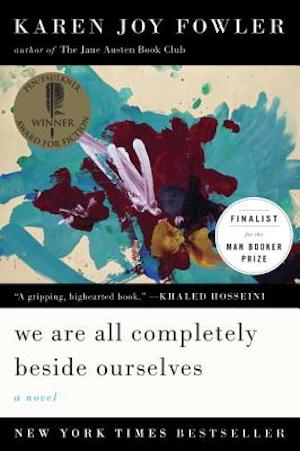
I think the statute of limitations on spoilers is up, but I still feel like I shouldn’t spoil the central conceit of the book. I’m also not sure if it even counts as science fiction, but there’s a central what if? that makes me feel like I can count it, even if it isn’t entirely science fictional, and it was nominated for the Nebula. That central what if relates to Rosemary and her unusual sister Fern and their relationship. That relationship infuses every aspect of Rosemary’s life, and is present throughout the decades recounted in the book, even long after Fern is no longer in the picture. Both her presence and her absence paint the picture of what Rosemary has lost. Gorgeous and heartbreaking.
Sarah Pinsker is the author of Nebula-winning novel A Song For A New Day, new novel We Are Satellites, and 50+ works of short fiction. She lives with her wife and dog in Baltimore, too far away from her sisters.










